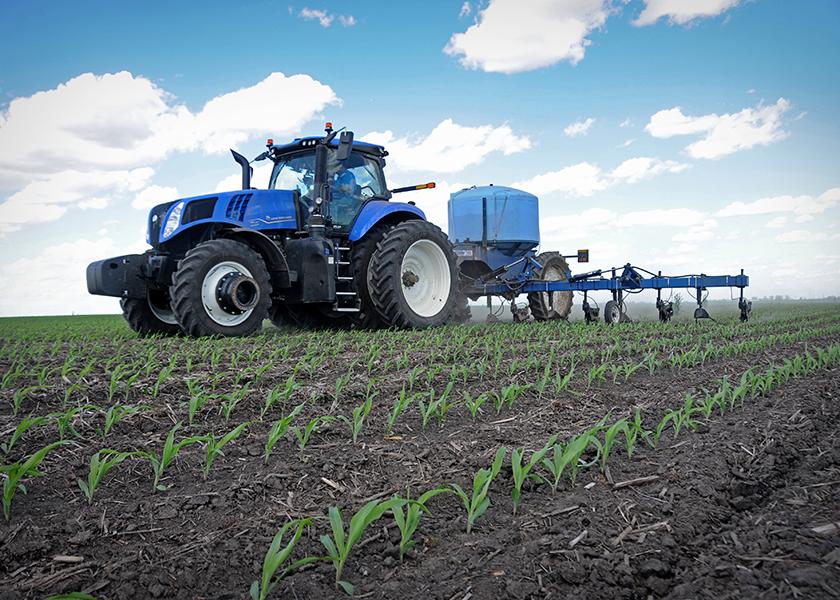U.S. Commerce Rules Russian UAN Imports Unfair, Opens Door for Tariffs and Even Higher Fertilizer Prices in U.S.

The Department of Commerce (DOC) issued a preliminary determination this week showing urea nitrate from Russia and Trinidad and Tobago is being sold into the U.S. at less than fair value. The determination could open the door for countervailing duties, and in turn, even higher fertilizer prices for U.S. farmers.
The Department's International Trade Administration (ITA) announced countervailing duty (CVD) rates based on their finding.
According to Pro Farmer Washington Correspondent Jim Wiesemeyer, the Federal Register shows the dumping rates for Trinidad and Tobago are 63.08% for Methanol Holdings and for all other firms. And rates for specified Russian entities range from 9.15% to 127.19%, with a rate of 15.48% for all other firms.
The ITC already ruled last summer that UAN imports from Russia and Trinidad and Tobago are hurting domestic fertilizer producers. That allowed the DOC to conduct the most recent investigation.
Facts and Figures
In the report, the Commerce Department said imports from Russia totaled 1,186,295 short tons in 2020 with a value at $137.8 million, with imports of 996,136 short tons from Trinidad and Tobago with a value of $99.7 million.
As a result, Wiesemeyer says, "the Commerce Department will impose cash deposit requirements on imports of UAN from Russia and Trinidad, based on the preliminary rates of dumping. Additional CVD cash deposit requirements are already in place based on Commerce’s previous preliminary finding that Russian UAN imports are unfairly subsidized at rates ranging from 9.66% to 9.84%, and that Trinidadian UAN imports are unfairly subsidized at a rate of 1.83%."
Higher Fertilizer Prices Ahead?
Fertilizer prices are already posing price pain for farmers looking to lock in inputs for the 2022 season. The latest Purdue University/CME Ag Economy Barometer was just released Tuesday, and it showed a producers expect a sharp decline in income in 2022 compared to 2021, and the driving factor was input prices and availability. The monthly barometer hit the lowest reading since July 2020.
Read More: "Has The Farm Financial Picture Turned Dire? Ag Economy Barometer Reveals Reality of Input Price Pain for 2022"
In the December, Texas A&M Agricultural and Food Policy Center (AFPC) issued a report on the “Economic Impact of Nitrogen Prices on U.S. Corn Producers." The report was prepared for 21 state corn grower groups. AFPC’s study showed farmers are currently facing nitrogen costs 80% higher than last year. That's as anhydrous ammonia prices reached 2008 levels in October at more than $1,000 per ton. And those prices have been steadily rising ever since.
“You're talking fertilizer prices that have gone up somewhere close to $200 an acre for some producers, and the revenue being generated is not offsetting that. And that's just the fertilizer industry,” Chris Edgington, an Iowa farmer and president of National Corn Growers Association (NCGA). “That’s not even talking about the chemistry industry, land values or equipment that people can't get. There is a big, big cash flow crunch coming. The banking industry is nervous about it as well, as they watch what has been a pretty good year for agriculture possibility go completely backward in this next growing season in a big way.”
Edgington says fertilizer prices are the top issue and concern for NCGA members right now, and claims the recent study out of Texas A&M reinforces the fact shell-shocked farmers can’t handle more price increases. That’s why NCGA says it will continue to urge CF Industries and Mosaic to withdraw petitions that led to the tariffs to the tune of 19% on imported fertilizers. While the DOC findings released earlier this week are related, a final ruling on the case filed by commodity groups is expected later this year.
“We understand some of the risks we take in agriculture, but when people are asking for tariffs on top of what is already a price that is not acceptable for farmers to be able to try to make a living we have some problems with that,” says the NCGA president. “That's why we're pushing back. It's these tariffs. It's companies that are using trade wars and tariffs that's affecting us, individual farmers, as we try to make day-to-day decisions. It will have an impact. There will be less fertilizer put on, crop mix will change but to what level depends on supply.”
Far from Over
While the preliminary findings are now public, the Commerce Department says the final determination will be delayed and will now be released June 17 with a final determination by the US International Trade Commission (ITC) due Aug. 1.







